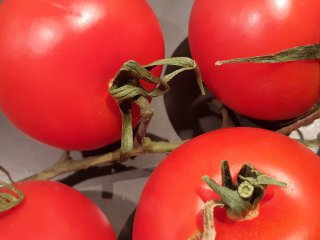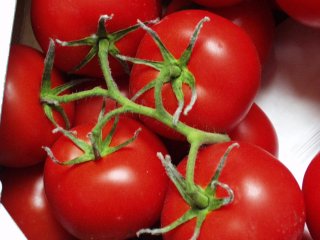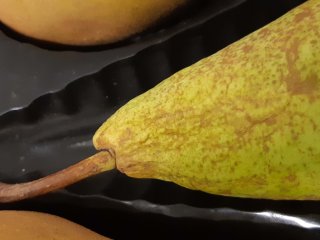
Situations in practice: moisture related problems
Although optimum temperature is usually the first requirement to maintain good product quality, humidity also plays a very important role. Low humidity after harvest increases moisture loss of the fresh product, resulting in a loss of marketable weight. Loss of quality in the form of wrinkling or wilting can also occur at low humidity. On the other hand, high humidity in the chain can more easily lead to mold growth. Products differ in their susceptibility to moisture-related problems. Therefore, in practice, the optimum humidity is adjusted via the packaging and environmental conditions.

Packaging to limit moisture loss
Some products are more sensitive to moisture loss than others. To prevent weight loss and loss of quality, a specific packaging can be chosen. Quality controls and logistics planning must take into account the type of packaging. For example, unwrapped cucumbers are more susceptible to dehydration than shrink-wrapped cucumbers.

Optimal humidity
Wrinkling and wilting are known consequences of too much moisture loss. In that case, the products have lost too much moisture to the drier ambient air. This can be reduced by placing the product in air with a higher relative humidity (RH). However, when the RH is high, mold growth can develop more easily. The sensitivity to dehydration, and therefore the optimal RH, differs per product. In shops, ultrasonic humidification is sometimes used to increase humidity (and decrease temperature). Trends and legislation regarding the reduction of (plastic) packaging ensure that moisture management is an increasingly essential point of attention to prevent food loss.

Dehydration of parts of the fruit
Different plant parts within one product can have different sensitivity to dehydration. Examples are tomatoes on the vine, red currants and strawberries. In these products, the green parts (stems, calyx) lose moisture more easily than the fruit.

Mold on calices
High humidity can affect different plant parts of a product in different ways. For example, molds can occur earlier, or be more visible, on specific parts of the product, such as stem or crowns.

Wrinkling
Products differ in their sensitivity to water loss. But the allowable water loss before symptoms become visible also differs per product. Bell peppers are quick to ripple while pumpkin is an example of a product that can tolerate high water loss before wrinkling occurs.

Wrinkling dependent on volume
The surface-to-volume ratio influences the sensitivity to moisture loss. Small fruits within a batch can therefore show signs of dehydration before larger fruits do. Shrivelling of the pear skin is first visible in the neck, the part where the skin surface is relatively large compared to the fruit volume below.

Texture of the product: limp
An example of how moisture loss can affect the texture of fresh produce is the dehydration of green beans. Fresh juicy beans pop easily when broken, while dried-out beans go limp.

Texture of the product: loss of firmness
Moisture loss can lead to a less firm product. For example, excessive moisture loss can lead to loss of broccoli compactness. While color and freshness may still look fine, the broccoli will no longer feel firm. The broccoli florets are then easy to separate from each other.

Discoloration and loss of gloss
Drying often leads to some discoloration and loss of shine. The changed structure of the leaf or skin gives the product a less glossy appearance, making it less attractive to consumers.

Browne edge in chicory
The sensitivity to brown edge in chicory depends, among other things, on the root and circumstances during forcing the head. This physiological abnormality can then show up later, especially during the display. Brown edge in chicory is often seen as a dehydration phenomenon, because it mainly occurs in heads with very thin leaf edges. At low humidity (and high display temperature), the moisture evaporates from the leaf edges.